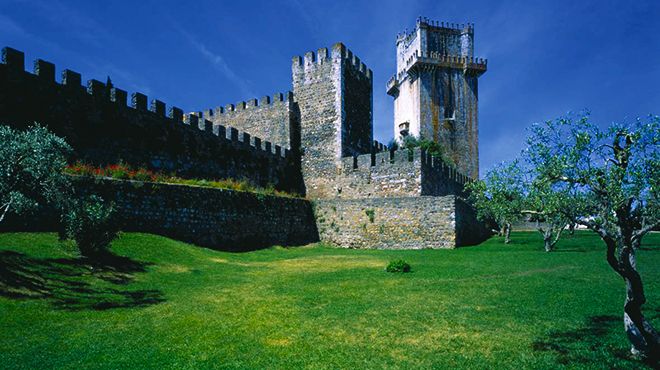Beja

Towns and Villages
The site of modern Beja has been occupied since the beginning of modern history. However, it was the Roman empire that most contributed to its early development. It was here, in 1 bc that Julius Cesar signed a peace treaty with the Lusitanian tribes who had previously ruled these lands. Henceforth, the settlement was named Pax Julia becoming the regional legal and administrative capital.
Modern Beja retains features of those Roman times including its layout while the Évora and Mértola gateways are located on the site of gates in the original Roman walls. The level of economic development can be seen in the range and scale of archaeological pieces that have been excavated. Many can be seen in the Rainha D. Leonor Regional Museum. Right by Beja, there is the Pisões Roman Town with exhibits depicting just how a Roman family of that period would actually have lived.
In the 6th century, the Visigoths conquered the territory and would remain until the 8th century when they were defeated by the Moors as they invaded the South of the Iberian Peninsula. A visit to the Visigoth Exhibit in the Regional Museum, located in the Church of Santo Amaro (Saint Amaro), is highly recommended as a means to learn more about Visigoth culture in a city they made their religious centre.
During the 12th century and the Christian Reconquest, Beja experienced turbulent times. First conquered by Christian forces in 1162, it was then subject to various counterattacks by Moors with peace only definitively established under king Afonso III in 1253. He then rebuilt the city granting it a royal charter (1254) and restoring its economic importance. At the end of the century, king Dinis ordered the building of the Castle, with its Torre de Menagem (donjon) becoming the city´s defining landmark.
Beja enjoyed periods of prosperity throughout the 15th century when king Afonso V established the Dukedom of Beja granting the title to his brother, Prince Fernando. King João II bestowed the Dukedom on his cousin, future king Manuel I. Henceforth, the dukedom would always become the possession of the king´s second son. This royal patronage took on a physical dimension in certain monuments. Among those deserving of a visit are the Convent of Nossa Senhora da Conceição (Our Lady of Conception), the Church of Misericórdia (Compassion), the Convent of São Francisco (Saint Francis), now a Pousada (Manor Hotel), the Church of Santiago, and the Church of the Pé da Cruz (Adoration of the Cross).
To help explore the city of Beja, the local Tourism Board has set up the "Sounds of Time", a guided tour of the city at your own pace through the use of headphones. The ideal time for a visit is March when the Ovibeja agricultural fair is held, a good pretext for knowing the region´s culture, history and economy.




 Explore
Explore 
 Remember and Share
Remember and Share 


